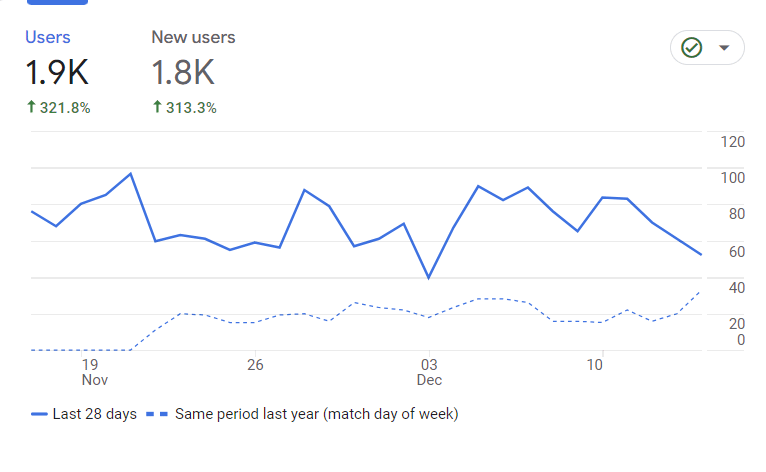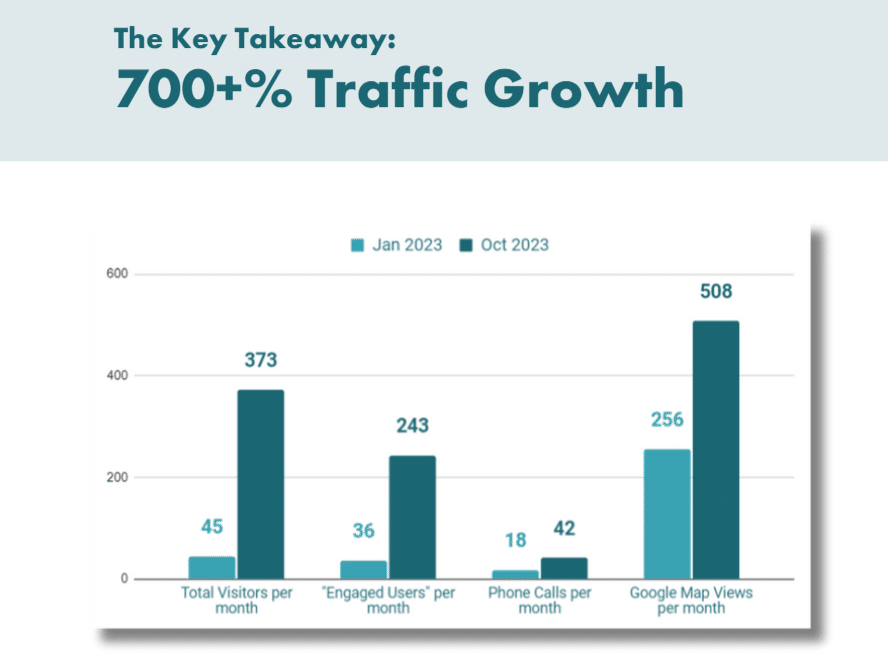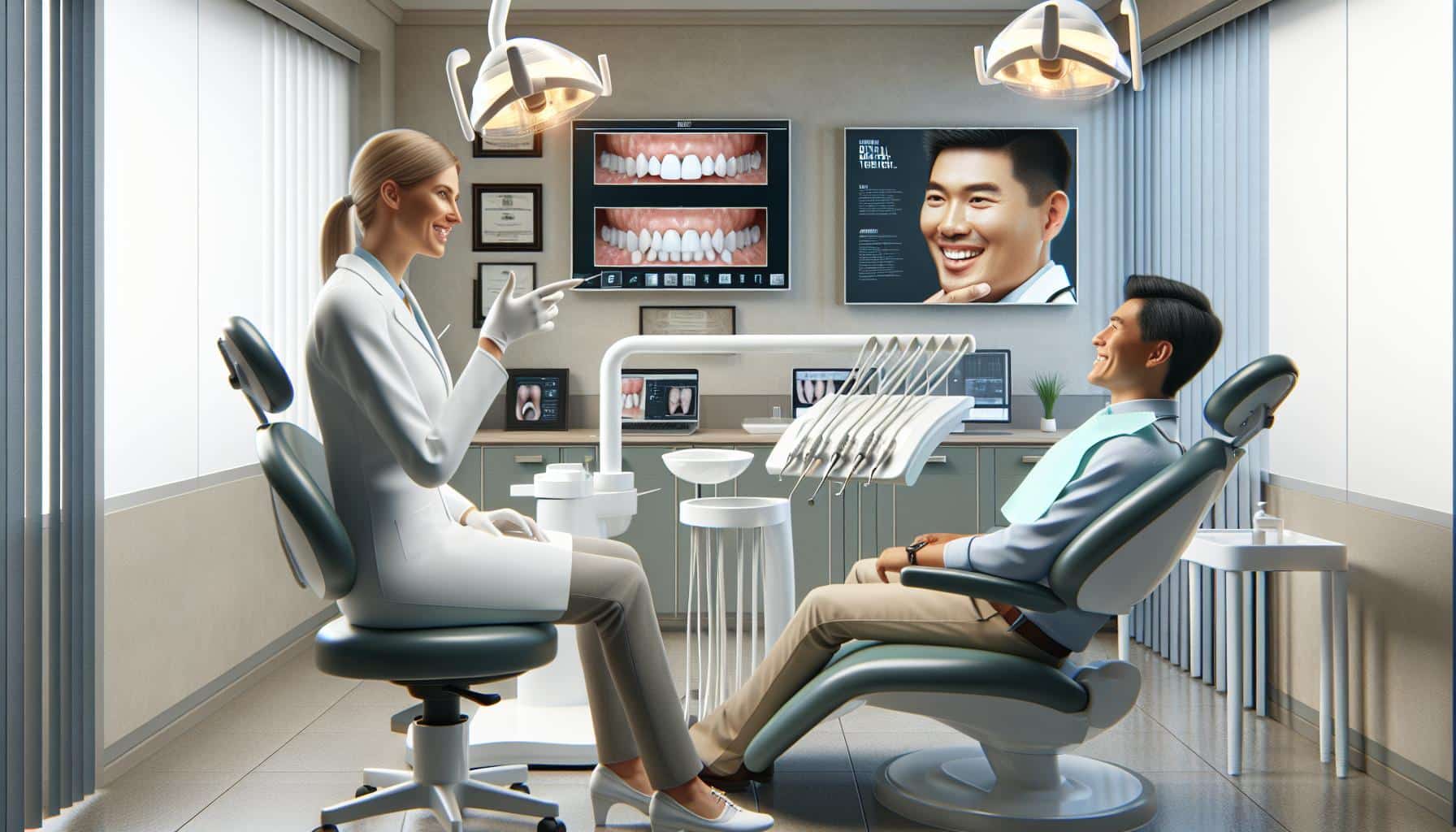Let’s Get Into the Nerdy Details:
If you treat these six core areas of SEO as your checklist and begin implementing these strategies for your practice, you’ll start to see a similar increase in website traffic and new patients.
Lets quickly look at year over year growth of the marketing channels:
| Default Channel Group | Sessions | Year-over-Year Growth |
|---|---|---|
| Organic Search | 1.1K | 478.9% |
| Paid Search | 790 | 214.7% |
| Direct | 318 | 549.0% |
| Organic Social | 35 | 169.2% |
On-Page and Technical SEO
Continuous efforts were made each month in auditing, optimizing, and fixing technical SEO issues. This included meta data optimization and resolving issues like indexability and mobile usability.
Indexability refers to a search engine’s ability to analyze and store a webpage in its database. Simply put, if a webpage is not indexable, it means search engines can’t see it, and therefore, it won’t appear in search results. Ensuring a website’s pages are indexable is crucial for them to be found by potential patients searching online.
Keyword Optimization
Regular keyword research and optimization were conducted, ensuring the content remained relevant and competitive.
Keywords are words or phrases that people use when they search for something on the internet. In the context of a dental practice, this might include terms like “teeth whitening,” “dental implants,” or “dentist near me.” Including more of these keywords in your website’s text and content helps search engines understand what the website is about and show it to the right people (i.e., those looking for dental services).
Content Creation
Two 750-word blog posts were consistently published every month. This demonstrates a strong focus on content marketing and SEO content ideation.
Content ideation is the process of coming up with relevant and engaging topics for website content, like blog posts. It involves researching what potential patients might be interested in or concerned about (like dental hygiene tips, information about braces, etc.) and understanding what internet users are searching for. Creating content around these topics helps attract and engage website visitors, which is beneficial for SEO because search engines favor websites that are valuable and informative to users.
GBP Profile Optimization
Google Business Profile (GBP) management, including posting and geo-tagging, was a consistent monthly activity, enhancing local SEO efforts.
Google Business Profile (GBP) optimization involves updating and managing a business’s profile on Google. For a dental practice, this means having accurate contact information, hours, services, and even patient reviews. This is crucial for local SEO because when people search for services like dentistry in their area, a well-optimized GBP increases the chances of the practice showing up in local search results, attracting nearby patients.
Off-Page Optimization
Monthly efforts in citation building, link acquisition, and later on, HARO account creation, indicate a focus on building a strong backlink profile.
- Citations are online mentions of the dental practice’s name, address, and phone number (NAP). Citations from reputable websites (like local business directories) help improve local search rankings because Google sees the dental practices NAP on that other reputable website, adding authority.
- HARO Account: HARO (Help a Reporter Out) is a platform where journalists seek expert opinions. By responding to queries related to dentistry, the practice can get mentioned in news articles, which enhances credibility and visibility online.
- Backlink Profile: This refers to the collection of links from other websites that lead back to the dental practice’s website. A strong backlink profile, especially from reputable and relevant sites, tells search engines that the website is authoritative and trustworthy, improving its search ranking.
Internal Linking and E-E-A-T Optimizations
As the campaign continued, after the foundation of a strong campaign was in place, our team shifted towards more sophisticated SEO strategies such as internal linking conceptualization and Google E-E-A-T optimizations.
E-E-A-T stands for “Experience, Expertise, Authoritativeness, and Trustworthiness.” It’s a set of criteria that Google uses to evaluate the quality of website content. For a dental website, this means having detailed, accurate, and helpful information about dental services and care along with trustworthy bios of team members. High E-E-A-T signals to search engines that the website is a reliable source of information, which can boost its ranking in search results.










